- |<
- <
- 1
- >
- >|
-
Shinichi Watanabe, Hiroyuki Saito, Tadahiro Tsuchikawa, Tomonori Sakoi2023 Volume 60 Issue 3-4 Pages 55-65
Published: December 26, 2023
Released on J-STAGE: January 20, 2024
JOURNAL FREE ACCESSThe WBGT estimation chart can estimate WBGT values using two thermal parameters of air temperature and relative humidity, and has been published in the "Guidelines of heat disorders prevention in daily life" issued by the Japanese Society of Biometeorology. It was pointed out, however, that the old version of the chart tends to underestimate in an environment with solar radiation and overestimate indoors without solar radiation. Therefore, in the revision of the heat disorders prevention guideline Ver.3.1, a revised version of the WBGT estimation chart that can be applied only to indoors without solar radiation was developed based on the heat balance theory. To verify this estimation chart, WBGT, air temperature, and relative humidity were measured using several WBGT measuring instruments with a globe thermometer in actual indoor spaces. The measurements clarified that the revised WBGT estimation chart was able to estimate WBGT values very close to the measured values in indoor spaces without solar radiation. Therefore, we concluded that the revised WBGT estimation chart is applicable in indoor spaces without solar radiation. Meanwhile, we emphasized the importance of using WBGT measuring instruments with a globe thermometer to appropriately assess the risk of heat disorders outdoors or in an environment with solar radiation.
View full abstractDownload PDF (8920K) -
Takahiro Atsumi, Takayuki Tokairin2023 Volume 60 Issue 3-4 Pages 67-74
Published: December 26, 2023
Released on J-STAGE: January 20, 2024
JOURNAL FREE ACCESSWe investigated the relationship between 1) the number of heat stroke cases and land use in Toyohashi city, also 2) the number of heat stroke cases and aging rate, percentage of elderly living alone. The ambulance transport data provided by the Toyohashi Fire Department, Aichi Prefecture, Japan was used. The data period was June to September 2010 - 2021. The obtained results showed that 1) the cluster analysis classified elementary school districts by typical land use ("farmland," "urbanized area," and "factory"),There was no relationship between difference of land use and the number of the cases due to heatstroke per 1,000 population. However, 2) there was a relationship between number of the cases and typical land use when the data aggregated by each age group or onset place. 3) there was a strong association between the number of cases per 1,000 population and the aging ratio, also and percentage of elderly living-alone in clusters that included many elementary districts classified as an urbanized area. For the elderly, who are more vulnerable to heat damage, more information and community-based measures will be needed in the future.
View full abstractDownload PDF (759K)
-
Japanese Society of Biometeorology2023 Volume 60 Issue 3-4 Pages 75-96
Published: December 26, 2023
Released on J-STAGE: January 20, 2024
JOURNAL FREE ACCESSDownload PDF (2502K)
- |<
- <
- 1
- >
- >|